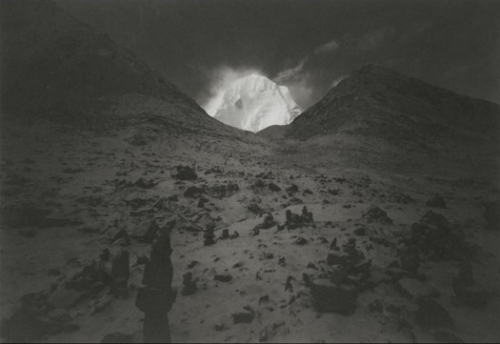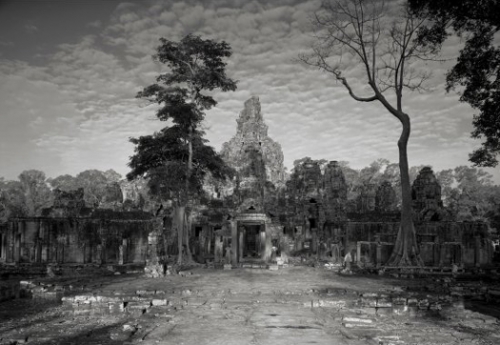A beautiful slideshow, Buddhism’s Sacred Places: Photos by Kenro Izu was recently published on the Huffington Post. I have long been fascinated by Izu’s work and was delighted when we ran some his photographs alongside Rodney Smith’s dharma talk Undivided Mind in our Summer 2010 issue, so I was very happy to see more pieces from the series in the slideshow this morning.
via the Huffington Post,
A picture may say a thousand words, but taken by Kenro Izu it is more like a thousand silent breaths. In Izu’s photography, ethereal moments, sacred places and holy people are frozen in motion. His medium — platinum prints — has a timeless, contemplative quality. And in fact, meditation is a part of how he gets the shot. Asked how he decides it’s time to snap the photo, he responded, “I try to face a monument, blank my thinking, and see if it vibrates to my heart.”
Izu has traveled the world with his custom camera, but we’ve compiled just 10 photos that brilliantly capture the geography — inner and outer — of Buddhism. The photographer has included insights into how he established each frame.

Mt. Kailash in Tibet
Mt. Kailash is a holy site for four different major religions: Tibetan Buddhism, Jainism, Bon and Hinduism. A steady stream of pilgrims from India, Tibet, Nepal and other countries come to pay homage to the mountain, following a route that takes them to altitudes in excess of 5,000 meters.
We camped out for two days at a spot where the north face of Mt. Kailash can be seen beyond numerous piles of “Mani stones” that have been placed there by the pilgrims.
The snow that fell the night before had covered the “Mani stones” as well as Mt. Kailash. As the first rays of the sun touched the 6,656-meter peak, the fresh snow was blown in a gust of wind, and wrapping the sacred mountain in a white veil. It was an encounter with the “atmosphere” of the place, an atmosphere quite appropriate for such a holy place.
After the first exposure, I changed lenses and made another. A few minutes later, the sunlight had reached the lower mountains and the “atmosphere” of disappeared.

Bayon Temple in Cambodia
I positioned the camera at the eastern gate of the temple of Bayon and waited for sunrise. As the sun rises over the jungle behind me, cirrocumulus clouds begin to spread across the western sky. In the moment that the Bayon temple is covered by a mysteriously pure light through the trees, the clouds cover the entire sky, creating an ethereal scene that filled me with profound inspiration. I made my first exposure in a state of ecstasy, but by the time I loaded the second plate, the vision has vanished to become just another landscape.